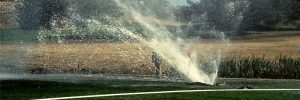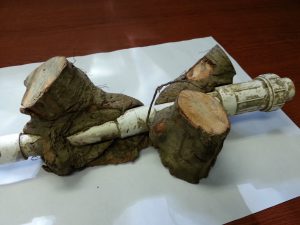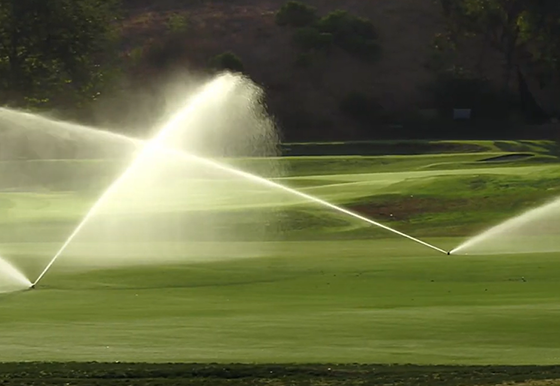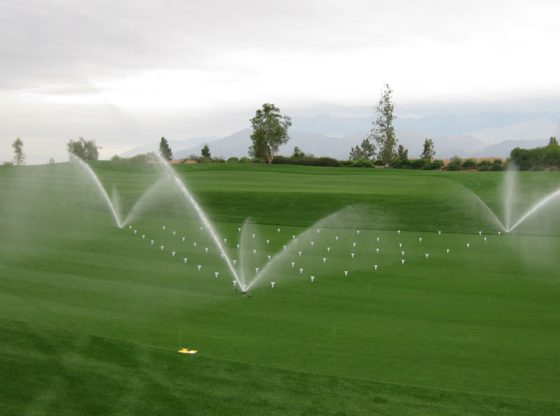Every golf course or large in ground irrigation system user experiences pipe fitting failures. Well designed and installed systems will have very few pipe failures.
People ask how many failures are acceptable? The right answer is none. The reality though is that even good systems eventually have a failure. Things happen. Somebody made a mistake, something cause unforeseen damage, operational parameters change, etc.
Why Do Pipe Networks Fail?
Bad Design or Installation
If a pipe network is poorly designed and/or installed, it is doomed for multiple failures. Sometimes using iron fittings during repairs will slowly weed out most of the failure points. But, that can take years and a lot of hassle to accomplish. Often its worth installing a new pipe network.
When you can influence the design, always opt for larger than minimum possible pipe. Most designers do this automatically. The reason people don’t is an attempt to cut the cost of the system. Be careful! My recommendation is to go one size larger than the calculated minimum.
If hydraulic calculations show that 6” pipe will work, I ask should we install 8”? Doing so provides important benefits;
- Lower flow velocity at the design flow rate. Velocity of flow is a big
 factor in determining pressure surge strength. Those surges are what hammers away at your fittings eventually causing failures.
factor in determining pressure surge strength. Those surges are what hammers away at your fittings eventually causing failures. - Available capacity for future needs. Inevitably the flow rate will be increased years after installation. Larger pipe gives you that ability. A good pipe network should last 30-50 years. But, only if its is large enough to handle the need.
- Less Pressure Loss: Lower velocities mean less pressure loss. Why pay for electricity to power a pump generating excess pressure to overcome the pressure losses in your pipe network. Pressure is energy. You pay to have that pressure so the less you need, the less you pay the power company. Sprinklers depend on a certain amount of pressure to operate well, less pressure loss means better overall system hydraulics and sprinkler performance.
Installation quality is hard to fix once installed. Usually you don’t know where the issues are until failure happens. Bottom line, make sure whoever is installing your pipe network knows what they are doing and cares about doing a good job.
Changed Operating Criteria
Well installed pipe systems will last a lifetime, literally. Most commonly, the need for the pipe system obsoletes it before it wears out. Why? The flow rate (demand) increases beyond the pipe network’s ability to reliably deliver. As flow rates increase so does velocities and surge pressures. The surge pressures then beat your fittings into submission.
External Damage
Of course somebody or something may damage your pipe network. It Could be animals, soil chemicals, stupid people, trees, acts of nature, etc. There is not much you can do to plan or deflect such incidents. Just repair the damage as best you can.
Why Is Velocity of Flow So Important?
Damage to Pipe Fittings
 Did you notice I mentioned velocity of flow a few times? That is the key to keeping a pipe network in sound shape for a long time. You want your velocity of flow to be low, in fact less than 4 feet per second if you can. Sure all the design education says you can flow up to 5 feet per second in PVC pipe before you exceed the manufacturer’s specifications. I like leaving room for future expansion and never operating at the design maximums.
Did you notice I mentioned velocity of flow a few times? That is the key to keeping a pipe network in sound shape for a long time. You want your velocity of flow to be low, in fact less than 4 feet per second if you can. Sure all the design education says you can flow up to 5 feet per second in PVC pipe before you exceed the manufacturer’s specifications. I like leaving room for future expansion and never operating at the design maximums.
Velocity and pressure work together to create surge pressure spikes. Picture it this way, you have a heavily built concrete wall designed to handle the energy of a pick-up truck crashing into it at 2 miles per hour up to 30 times per day for a lifetime.
The wall represents your pipe fittings. The truck represents the gallons per minute of water flowing through your pipe network. The 2 miles per hour represents the flow velocity of that water in your pipe at 3 feet per second. And the 30 times per day represents your valves opening and closing.
Lets say you double the flow rate (gpm). Now your water is traveling at 6 feet per second instead of 3. Or the truck at 4 miles per hour instead of 2. See how the energy the wall must dissipate just took a huge leap? Exceed the wall’s design and it is destined to fail. Same with your pipe fittings when your flow rates are above recommended specs. Over time the repeated impact will beat your wall beyond capacity.
Make sure your flow rates are below the manufacture specifications of 5 feet per second. By the way, pipe rarely fails; its your fittings that take the abuse.
This is part one of a two part series, check out part 2.












